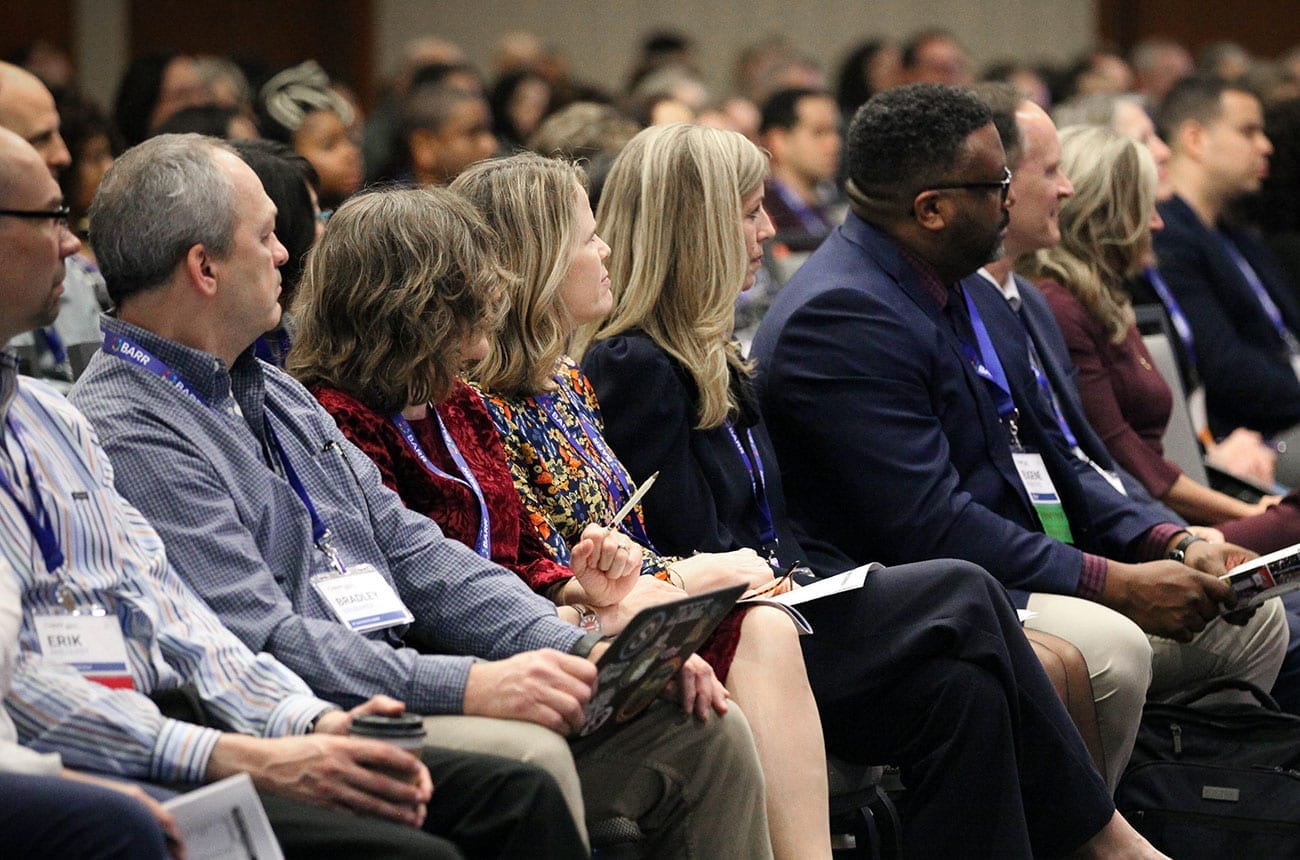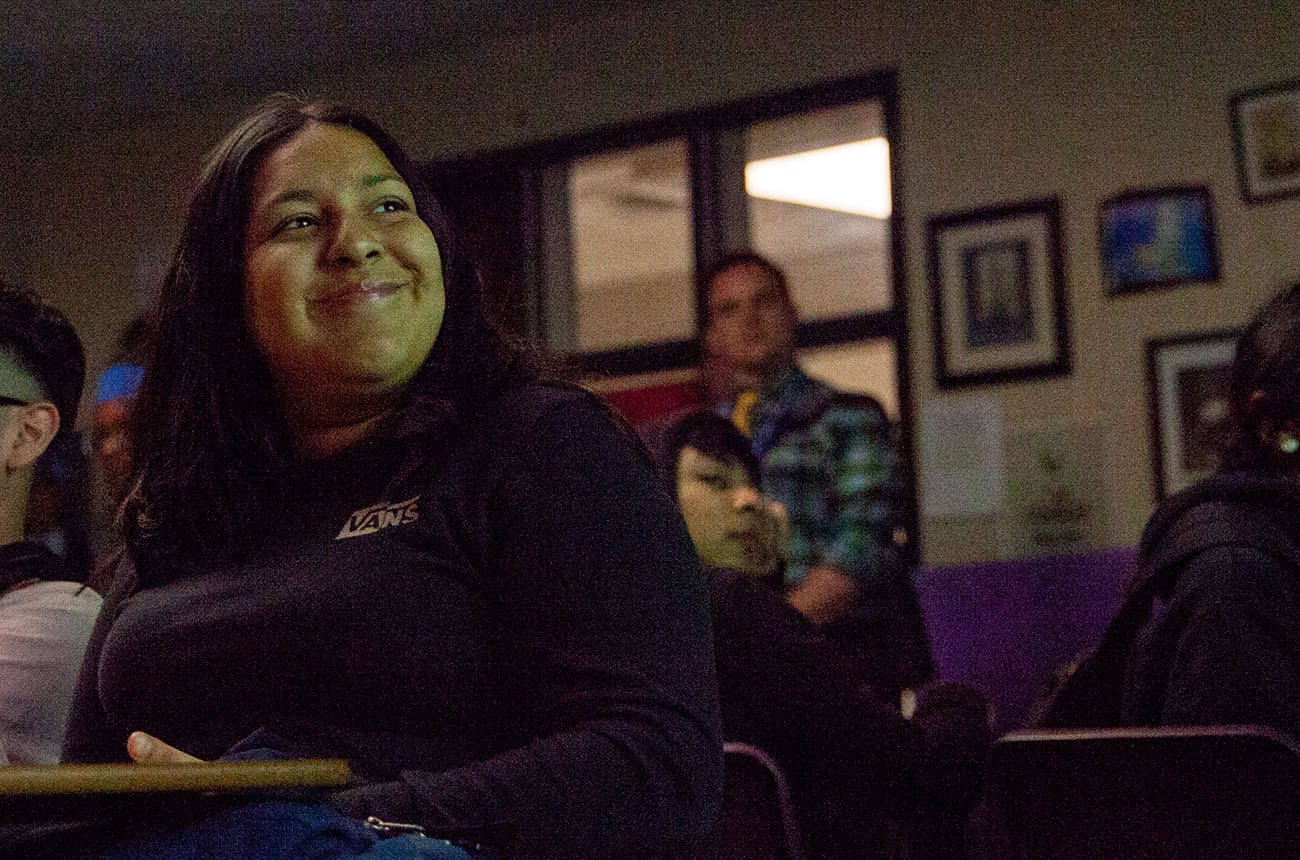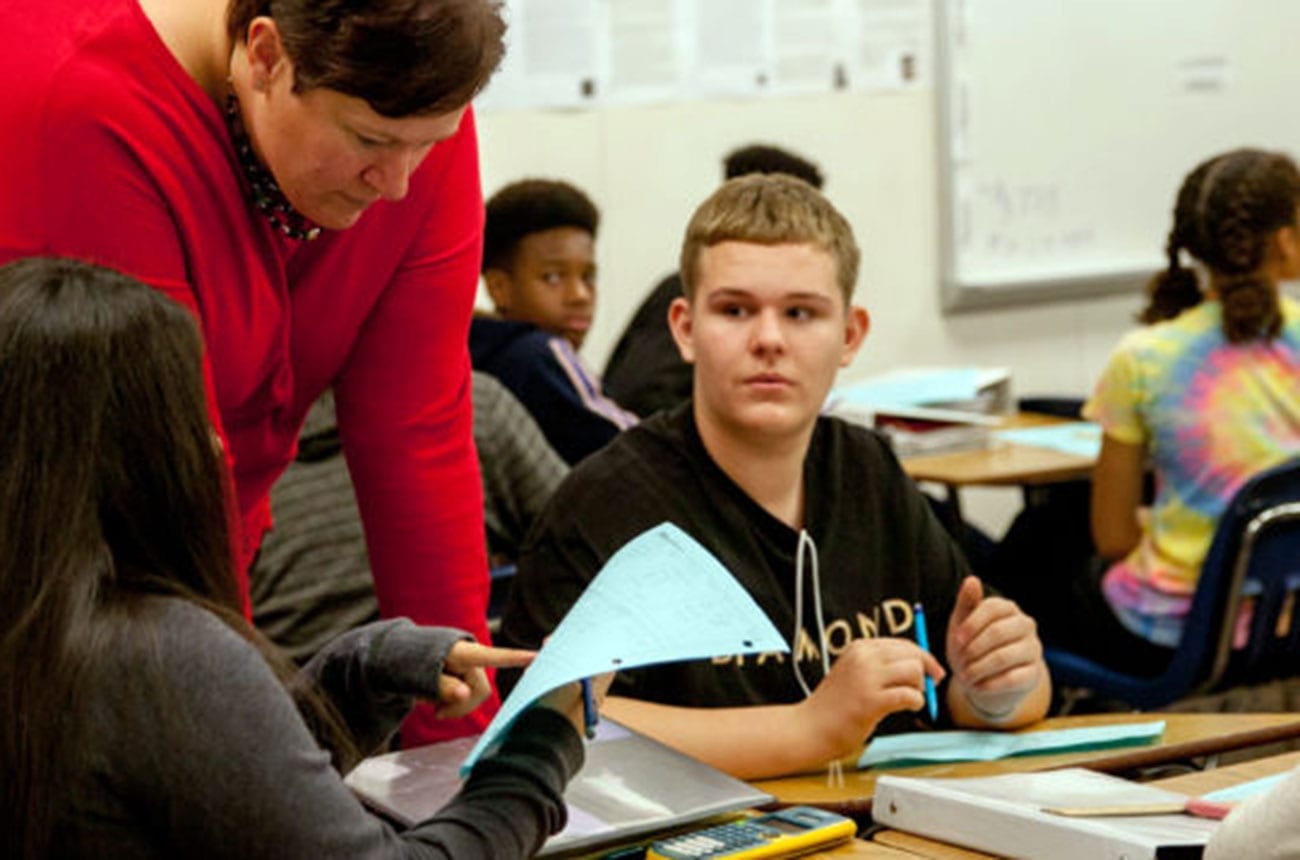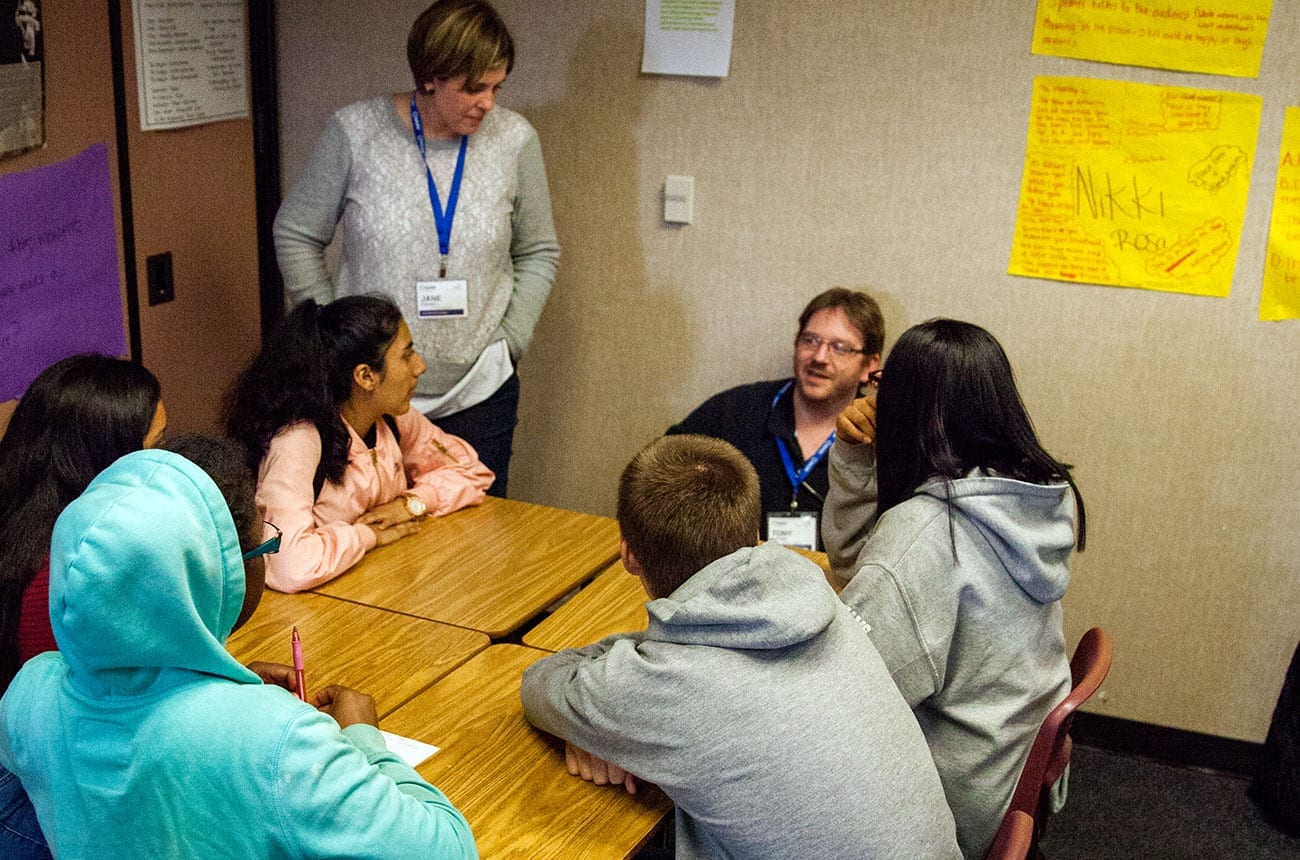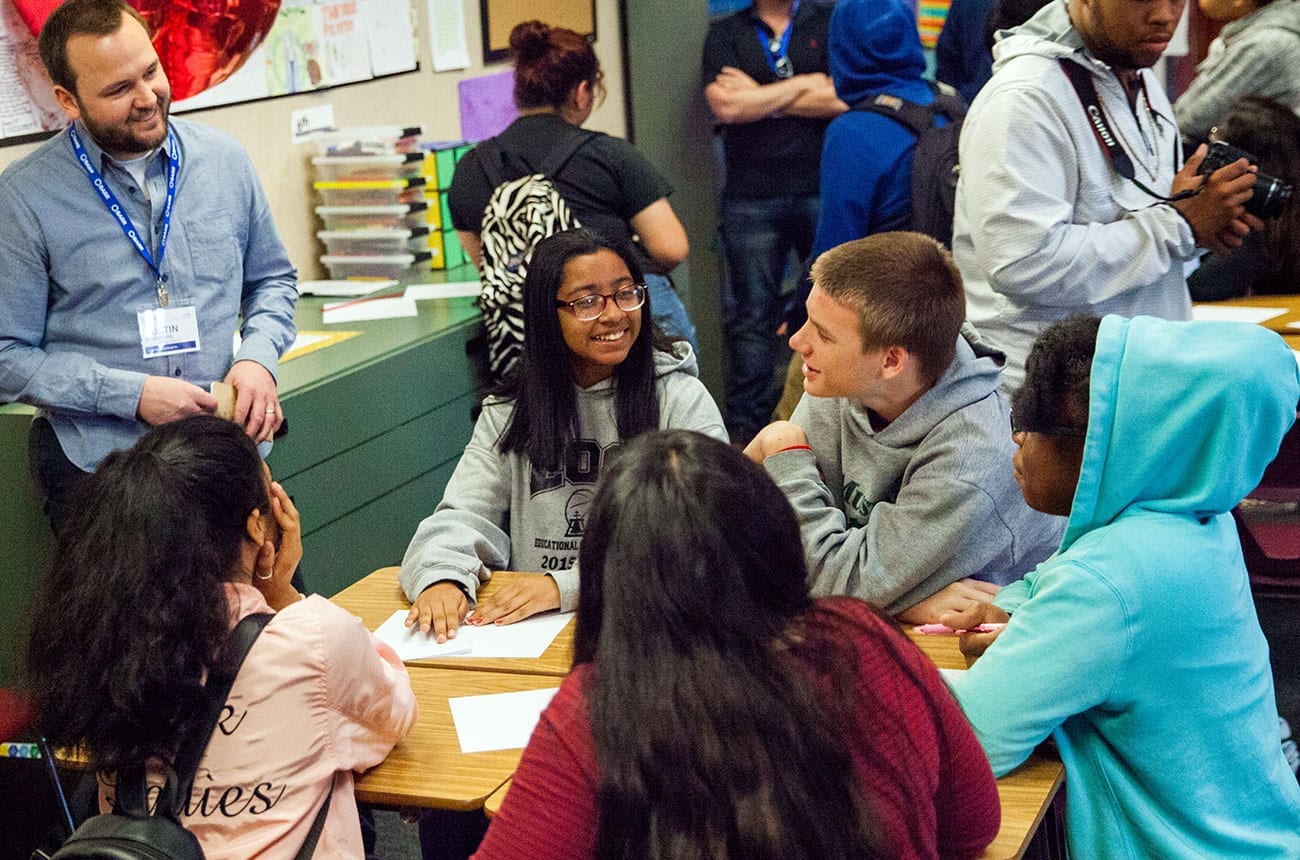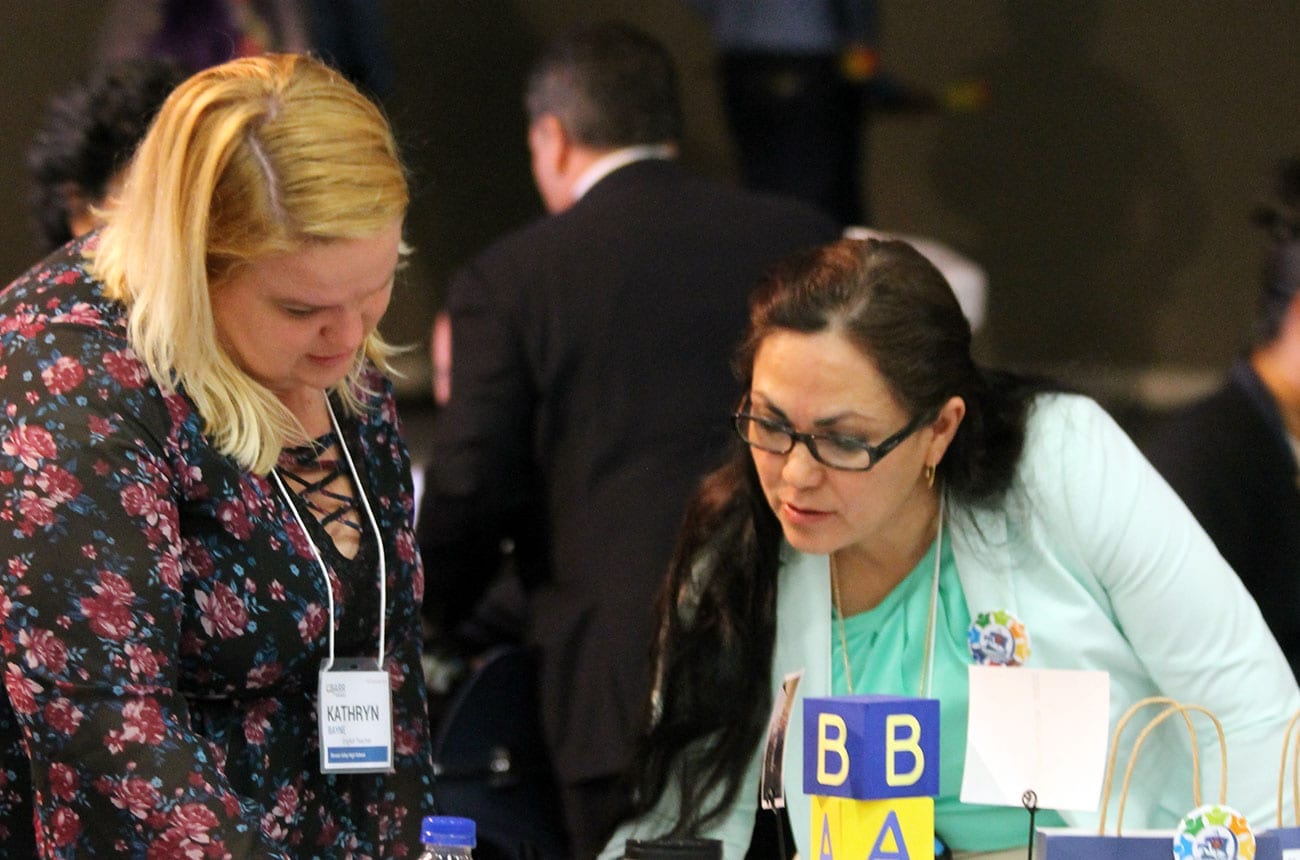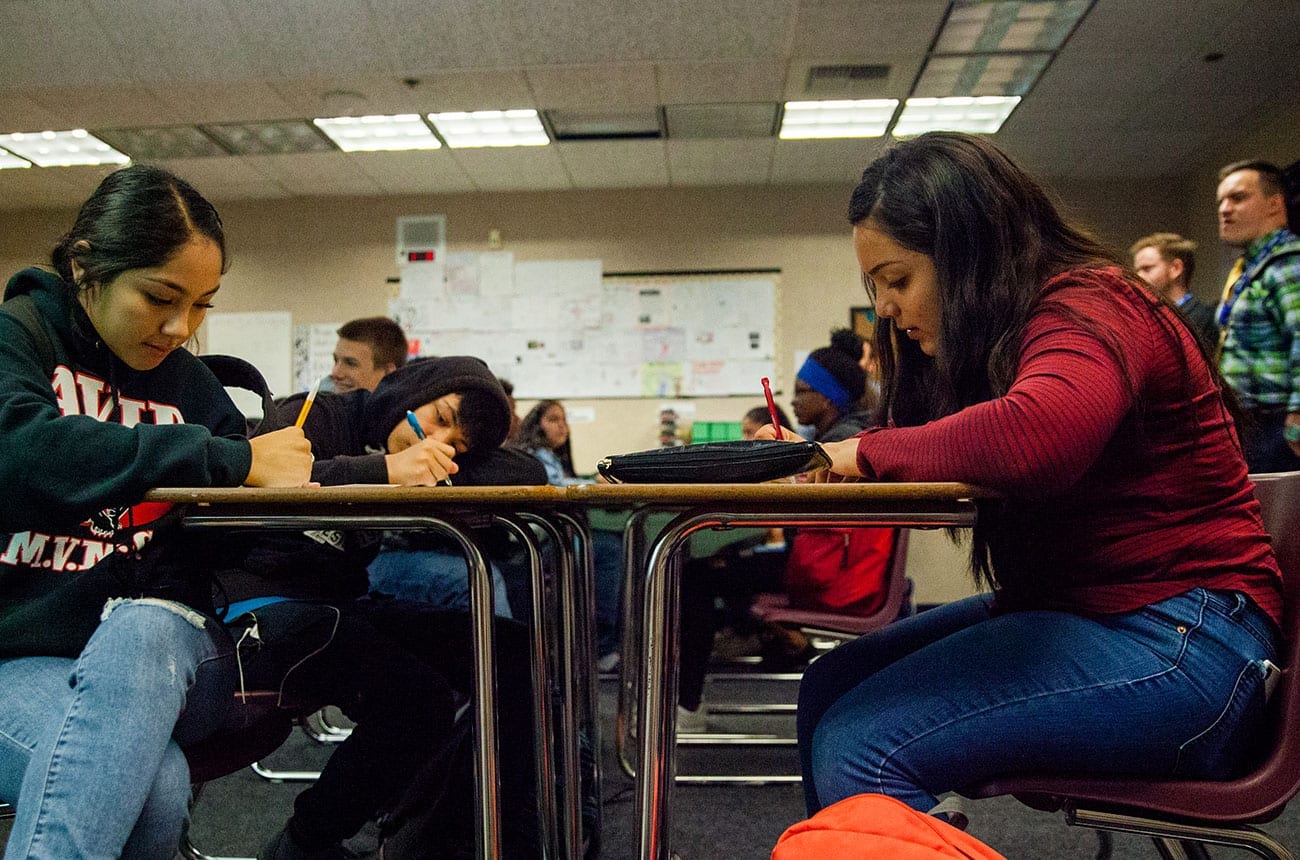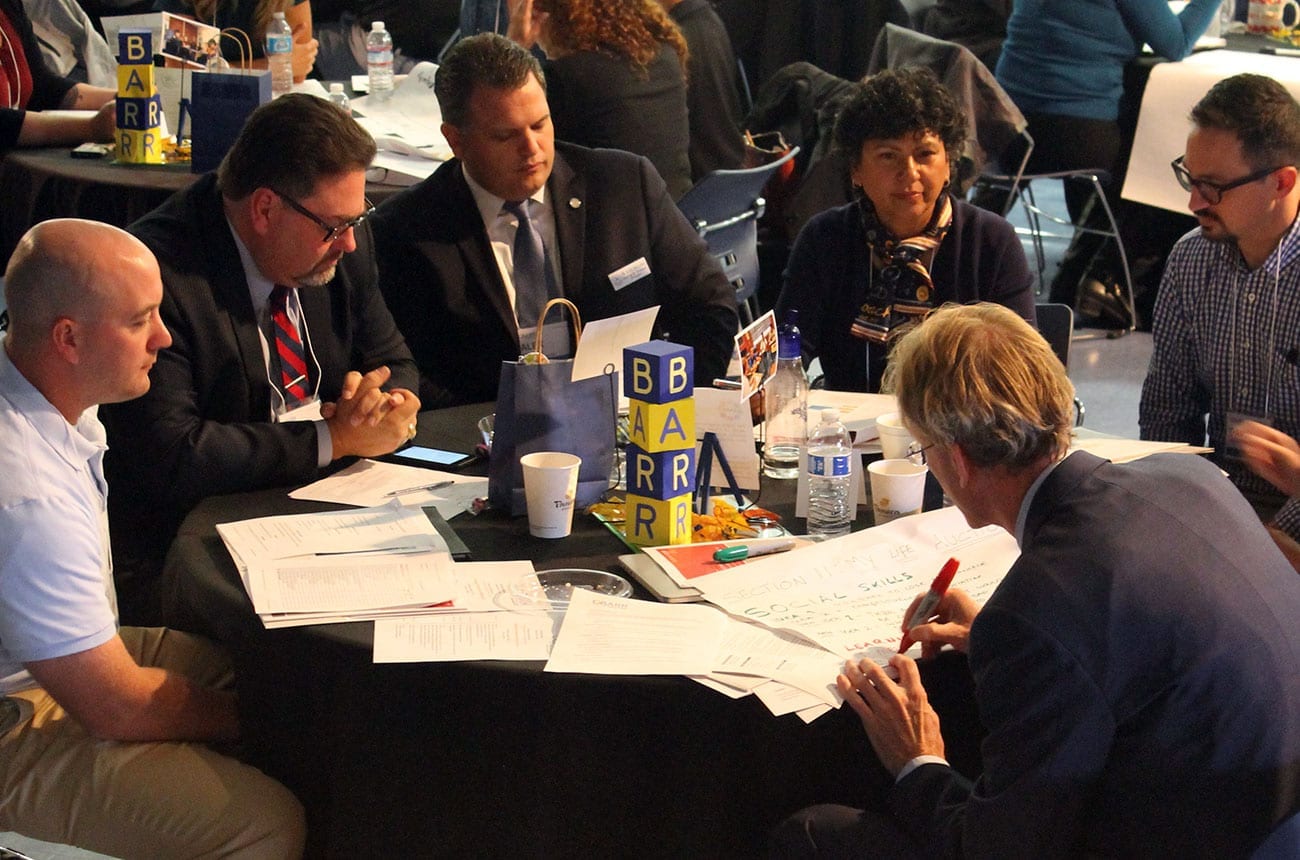Focus on the whole student
Students don’t check their lives at the door, and BARR educators know that. They work with each and every student’s academic and non-academic needs to ensure they are ready and able to learn.
Provide professional development for teachers, counselors, and administrators
Educators are lifelong learners. BARR offers regular hands-on, practical trainings and provides unlimited coaching support to BARR school staff. Topics include: implementing the model, fostering resilience, reducing risky behaviors, addressing trauma, and increasing meeting effectiveness.
Use BARR’s lessons (U-Times and I-Times) to foster a climate for learning
To foster teacher-to-student and student-to-student relationships, BARR teachers facilitate a weekly 30-minute lesson (U-Times or I-Times) focused on helping students learn and practice essential life skills.
Create cohorts
To foster staff -to-staff, staff-to-student and student-to-student relationships, cohorts of students and staff are created. This structure helps educators cultivate connections – with students and each other – that allow for more effective education.
Hold regular meetings of the cohort teacher teams
In a shared meeting time, cohort teachers meet weekly to discuss each student, from a strength-based perspective, using student-level data that is updated every week. They collaborate to identify struggling students and interventions, as well as students who should be accelerated.
Conduct Community Connect meetings
Cohort teacher teams identify students that are in need of more intensive support and move them into a structured process that engages the community to determine the most effective response.
Engage families in student learning
“Family involvement.” What does that really mean? BARR improves communication with families, recognizing them as active partners. Leveraging student strengths and collaboratively meeting with the cohort of teachers are two strategies, among many, that families utilize.
Engage administrators
Each school setting is unique, and administrators can use BARR to achieve specific, measurable goals within local context. Administrators in the BARR community network with one another for ideas on how to effectively lead their schools.
